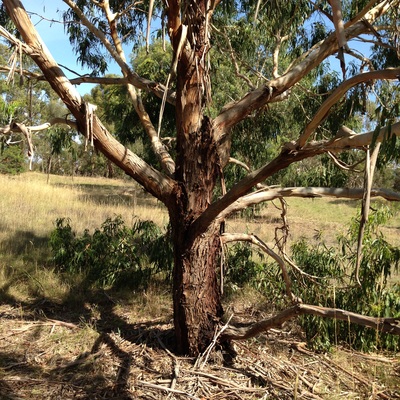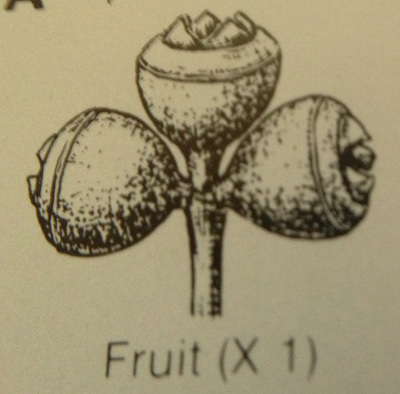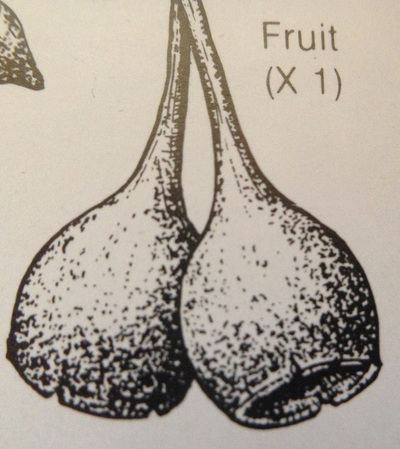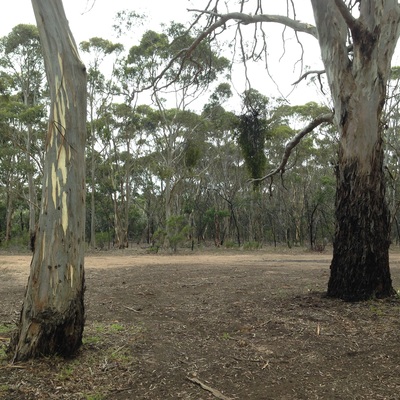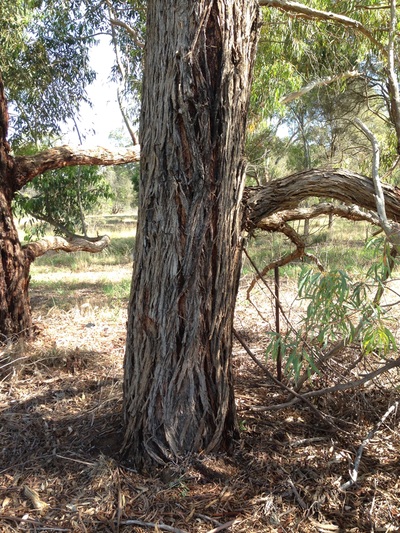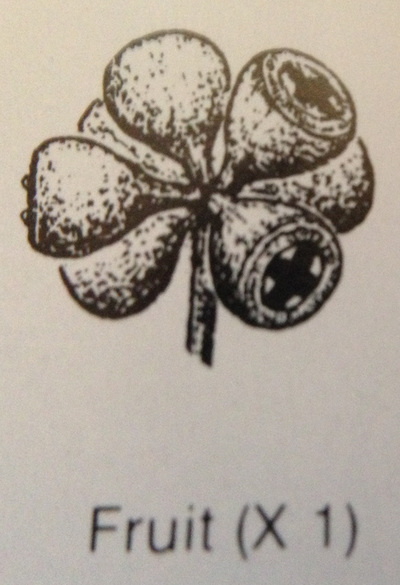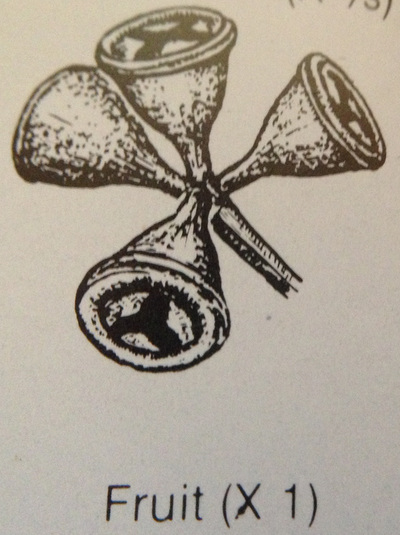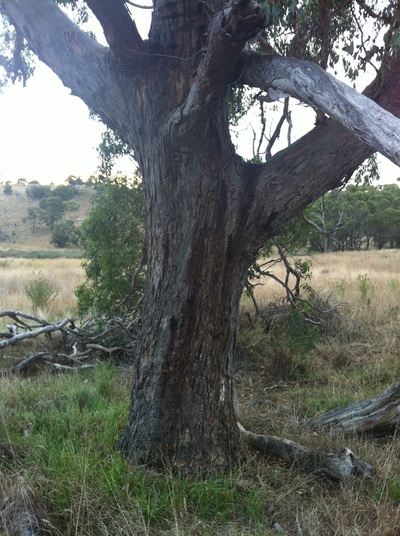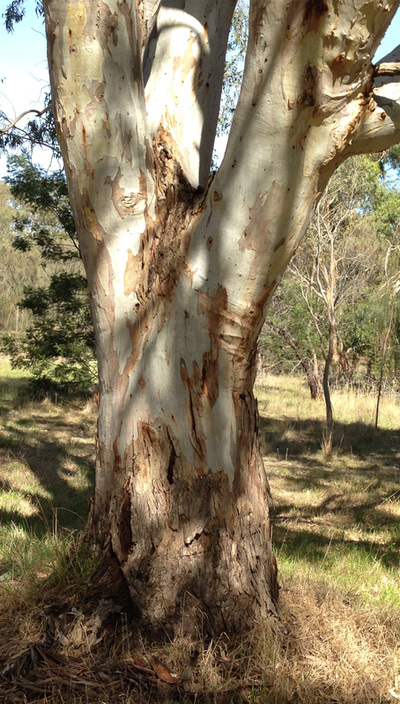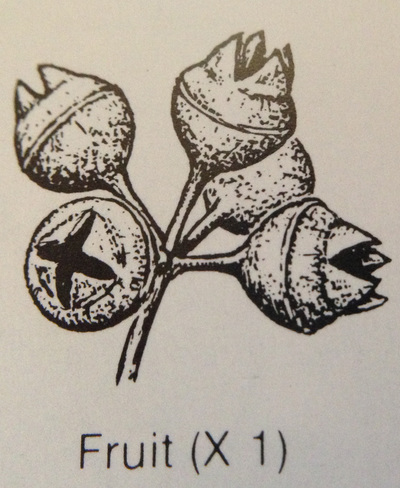Eucalypts of the Barrabool Hills
|
Eucalypts of the Barrabool Hills - the Sentinels
It’s a steep climb out of Highton driving west toward Ceres and the uninterrupted views across the Barrabool Hills toward the Barwon River are exhilarating. It’s not unusual to be able to cap off this panoramic spectacle with the joy of seeing Wedge-tailed Eagles circling and rising on the thermals, just specs in the clear mid-day sky.
When these majestic birds return to earth they need ‘the Sentinels’ (big old eucalypts) for nesting, but as our unbroken views demonstrate, they’re pretty scarce on the hills. Usually they would seek out eucalypts like Manna Gum (Eucalyptus vininalis), Yellow Gum (E. leucoxylon) and Narrow-leaf Peppermint (E. radiata) on the hill country but more likely it would be one of the many River Red Gums (E. camaldulensis) growing along the Barwon River or perhaps Swamp Gum (E. ovata) growing in the gullies.
When these majestic birds return to earth they need ‘the Sentinels’ (big old eucalypts) for nesting, but as our unbroken views demonstrate, they’re pretty scarce on the hills. Usually they would seek out eucalypts like Manna Gum (Eucalyptus vininalis), Yellow Gum (E. leucoxylon) and Narrow-leaf Peppermint (E. radiata) on the hill country but more likely it would be one of the many River Red Gums (E. camaldulensis) growing along the Barwon River or perhaps Swamp Gum (E. ovata) growing in the gullies.
The relationship between the iconic Wedge-tale Eagle and the Sentinels is as old as the hills themselves yet it is also quite fragile and very sensitive to change. Big old trees are described by ecologists as a 'keystone feature' in our rural landscapes, because like the keystone in a masonry archway, if they are lost the ecology suffers in ways far beyond what we might anticipate.
One important feature of old trees is their hollows. Over 300 different Australian fauna depend on hollows during their life cycle and this list includes many birds, bats, gliders, possums, frogs and lizards. Add to this the many species of perching and nesting bird and the countless insects and you have a complex ecology existing in a single tree. For our native fauna they are the supermarkets and the hardware stores of the bush providing food and resources that support a broad array of life forms.
From a practical point of view, scattered old paddock trees reduce wind velocities from all directions by up to 50% and provide welcome shade for stock in the summer months. Paradoxically stock camping under old trees can stress them by compacting the soil and raising soil nutrient levels. That’s why it’s advisable to have as many as 8 – 15 scattered paddock trees per hectare to minimise these negative effects.
One important feature of old trees is their hollows. Over 300 different Australian fauna depend on hollows during their life cycle and this list includes many birds, bats, gliders, possums, frogs and lizards. Add to this the many species of perching and nesting bird and the countless insects and you have a complex ecology existing in a single tree. For our native fauna they are the supermarkets and the hardware stores of the bush providing food and resources that support a broad array of life forms.
From a practical point of view, scattered old paddock trees reduce wind velocities from all directions by up to 50% and provide welcome shade for stock in the summer months. Paradoxically stock camping under old trees can stress them by compacting the soil and raising soil nutrient levels. That’s why it’s advisable to have as many as 8 – 15 scattered paddock trees per hectare to minimise these negative effects.
Protecting existing old trees adds value to a property both visually and practically but good planning would involve preparing the way for the next generation of sentinels. The sad thing is that the old trees won’t live forever and throughout Australia studies clearly show that around 2% are dying each year and aren’t being replaced.
The next generation of Sentinels can be stimulated by fencing off an area downwind where their seed will land, germinate and grow without grazing pressure. Incorporating them into new plantations will also encourage this natural regeneration
as well as prolonging the lives of the old trees by providing nearby shrubby habitat for birds that feed on defoliating and boring insects.
These simple measures will ensure future generations of land-carers will reap the benefits of a diverse and sheltered landscape provided by scattered and healthy sentinels throughout the Barrabool Hills and the surrounding countryside.
The next generation of Sentinels can be stimulated by fencing off an area downwind where their seed will land, germinate and grow without grazing pressure. Incorporating them into new plantations will also encourage this natural regeneration
as well as prolonging the lives of the old trees by providing nearby shrubby habitat for birds that feed on defoliating and boring insects.
These simple measures will ensure future generations of land-carers will reap the benefits of a diverse and sheltered landscape provided by scattered and healthy sentinels throughout the Barrabool Hills and the surrounding countryside.
Another amazing ancient plant that is still seen on the roadsides in the Barrabool Hills is the Drooping Sheoak >
The White Cypress-pine > was also recorded there by the Geelong Field Naturalists in 1911 but survives no longer.
The White Cypress-pine > was also recorded there by the Geelong Field Naturalists in 1911 but survives no longer.
Give me a home among the gum trees tells the story about an important symbiosis between eucalypts and migrating parrots
